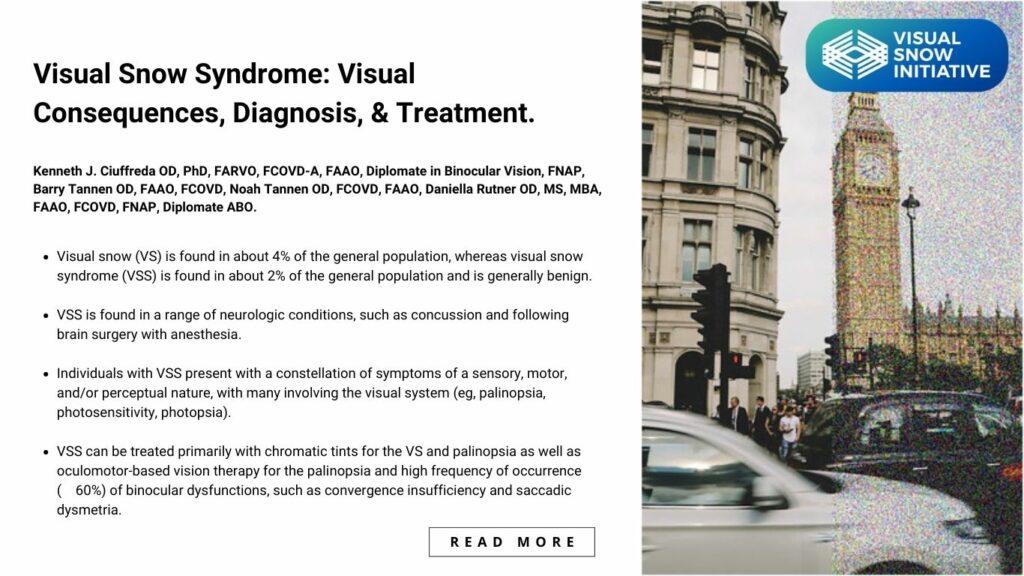Kenneth J. Ciuffreda OD, PhD, FARVO, FCOVD-A, FAAO, Diplomate in Binocular Vision, FNAP, Barry Tannen OD, FAAO, FCOVD, Noah Tannen OD, FCOVD, FAAO, Daniella Rutner OD, MS, MBA, FAAO, FCOVD, FNAP, Diplomate ABO
Key Points
- The condition of visual snow syndrome (VSS) is an emerging neurologic/neuro-optometric condition having a wide range of visual and nonvisual symptoms. These are of a sensory, motor, and perceptual nature.
- VSS is estimated to be present in at least 2% of the population, which is a far cry from the early days of stating that it was a “rare” condition.
- The key visual symptom of VSS is the presence of a pixelated overlay of “visual snow” across and in front of the entire visual field.
Significance
Visual snow (VS) is an enigmatic, intriguing, and bothersome, typically nonprogressive [1], visuo-perceptual, and neurologic abnormality [[2], [3], [4], [5]]. It has been characterized as a pixelated array of dynamic visual noise, or “dots,” appearing in a “perceptual” plane superimposed on the “physical” plane of the visual scene (Fig. 1) [6]. Thus, there are two depth planes of visual context: the important background visual scene itself and the interfering overlay of VS in the foreground. It has been described as being somewhat similar to the “electronic noise” occurring in a detuned television. The VS typically is constantly present and a chromatic nature (80%), although it may appear to be transiently present and achromatic to some (20%) [6].
In addition to the key symptom of VS, several other primary and secondary, visual and nonvisual symptoms occur that must typically be present for at least 3 months to be diagnosed as “visual snow syndrome” (VSS) (Box 1) [[2], [3], [4], [5], [6]]. Regarding the primary visual symptoms of VSS, the individual must report at least two of the following four: palinopsia (abnormal persistence or recurrence of an image in time: Fig. 2), photosensitivity, enhanced entoptic imagery, and impaired night vision (“nyctalopia”). In addition, they frequently report one or more of the following visual and nonvisual symptoms: photopsia, migraine, phonophobia, hyperacusis, cutaneous allodynia, tinnitus, balance problems, and tremor. Thus, those with VSS report a wide spectrum of visual and nonvisual symptoms of a sensory, motor, and perceptual nature, with many involving the visual system.
Read the Full Study Below


